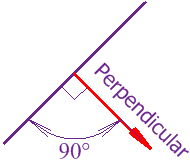Kineese
Registered
Question about managing surface current!
Was shore diving with my buddy recently and the initial plan was to surface swim out, descend down a buoy, putz around there, then at half tank turn and follow the slope back to shore. My buddy and I are fairly new so his air consumption was a bit higher than we anticipated so we ended up ascending sooner. No big problem, just surface swim back! However, in the time we were under a bit of a tidal current picked up. It was fairly mild and I could swim against/perpendicular to it okay (Directly against it was back to our entry point so we decided to swim perpendicular to shallower water then walk from there), my buddy on the other hand had a fairly inefficient kick (lots of bendy knees, not much propulsion) and I ended up towing him a bit so that we didn't get pushed to far away from the entry point as we were making our way shallower.
I had 1200psi left and probably could have descended and made it back but he had 600psi so we felt like that wasn't an option. We got out just fine. No panicking, just tired and a longer walk in gear (no more than 200m from out entry point, but my spatial perception is awful so +/- 500m). The current was not super strong but it got me wondering what would have happened if it was stronger cause my buddy definitely wasn't the strongest kicker and my legs were not fantastic enough to carry both of us against the current.
Any advice or things you would have done differently?
Was shore diving with my buddy recently and the initial plan was to surface swim out, descend down a buoy, putz around there, then at half tank turn and follow the slope back to shore. My buddy and I are fairly new so his air consumption was a bit higher than we anticipated so we ended up ascending sooner. No big problem, just surface swim back! However, in the time we were under a bit of a tidal current picked up. It was fairly mild and I could swim against/perpendicular to it okay (Directly against it was back to our entry point so we decided to swim perpendicular to shallower water then walk from there), my buddy on the other hand had a fairly inefficient kick (lots of bendy knees, not much propulsion) and I ended up towing him a bit so that we didn't get pushed to far away from the entry point as we were making our way shallower.
I had 1200psi left and probably could have descended and made it back but he had 600psi so we felt like that wasn't an option. We got out just fine. No panicking, just tired and a longer walk in gear (no more than 200m from out entry point, but my spatial perception is awful so +/- 500m). The current was not super strong but it got me wondering what would have happened if it was stronger cause my buddy definitely wasn't the strongest kicker and my legs were not fantastic enough to carry both of us against the current.
Any advice or things you would have done differently?
Last edited:




